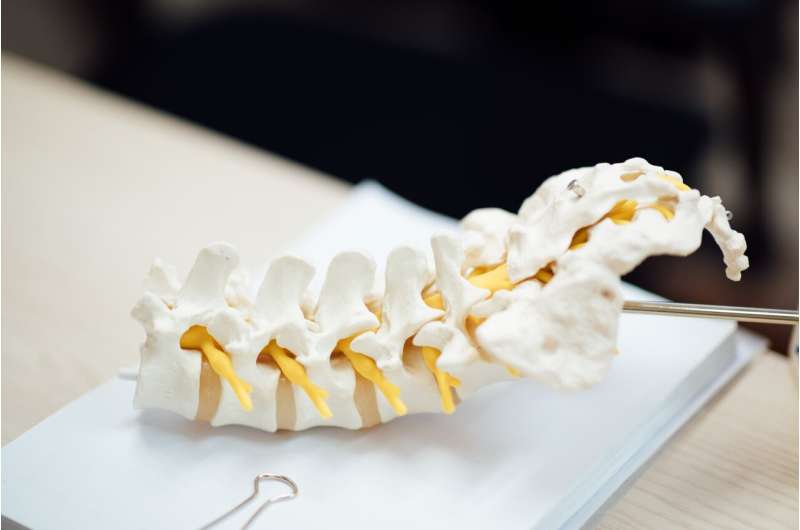Credit: Unsplash/CC0 Public Domain
A new study published in the Journal of Neurotrauma demonstrates a strategy for treating a chronic spinal cord injury in rats that led to functional recovery of the paralyzed forelimb and paw and precision movements of the digits.
Adrianna Milton, from Case Western Reserve University, and co-authors from Dr. Jerry Silver's laboratory describe the use of a novel combinatorial treatment strategy designed to both reduce and overcome the effects of chondroitin sulfate proteoglycan. Chondroitin sulfate proteoglycan is a component of the extracellular and perineuronal net matrix that inhibits neuronal regeneration/sprouting, especially during the chronic stages of spinal cord injuries.
The investigators evaluated the combined treatment in rats that had sustained an upper cervical spinal cord injury three months previously.
"In addition to the use of the receptor disrupting wedge peptide, we employed a novel strategy in combination which can simultaneously and expansively reduce the matrix and perineural net chondroitin sulfate proteoglycans," stated the investigators. The findings "revealed that treatments with perineuronal net inhibitor and intracellular sigma peptide alone but especially in combination can stimulate a good measure of recovery."
"This is an important step forward for the field, with real potential for clinical translation," says David L. Brody, MD, Ph.D., editor-in-chief of Journal of Neurotrauma.
More information: Adrianna Milton et al, Recovery of forearm and fine digit function after chronic spinal cord injury by simultaneous blockade of inhibitory matrix CSPG production and the receptor PTPσ., Journal of Neurotrauma (2023). DOI: 10.1089/neu.2023.0117
Journal information: Journal of Neurotrauma
Provided by Mary Ann Liebert, Inc
























